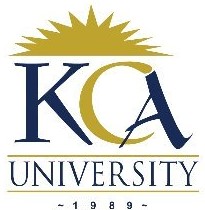
UNIVERSITY EXAMINATIONS: 2018/2019
EXAMINATION FOR THE DEGREE OF BACHELOR OF SCIENCE IN
INFORMATION TECHNOLOGY/ BUSINESS IT/ APPLIED COMPUTING
BIT 2107: OBJECT ORIENTED ANALYSIS & DESIGN
FULLTIME/ PARTTIME/ DISTANCE LEARNING
DATE: AUGUST 2019 TIME: 2 HOURS
Instructions
o Answer question ONE and any other TWO.
o Question One carry 30 marks, others 20 marks each.
QUESTION ONE. (COMPULSORY)
(a) (c) What do you understand by the following terms as used in Object oriented concepts?
(i) Encapsulation (2 Marks)
(ii) Inheritance (2 Marks)
(iii) Prototype (2 Marks)
(iv) Attribute visibility (2 Marks)
(v) Polymorphism (2 Marks)
(b) Highlight any three limitations of the structured approach to software development.
(3 Marks)
(c) Explain the steps followed in the analysis and design stages of the object-oriented
approach to systems development. (4 Marks)
(d) Differentiate between the following set of terms as used in Object Oriented field:
(i) Object and Class (4 Marks)
(ii) Aggregation and composition (4 Marks)
(e) Define Sequence diagram by and show symbols used to draw them.(5 Marks)
QUESTION TWO
(a) Consider the following scenario.
A student who wishes to register for the MSc programme should contact the course
leader. The course leader helps the student select their modules. The Module selections
are recorded by the school administrator in the registration file. The student is given a
letter of registration
Draw the class diagram to include any inheritance, aggregation or composition and
multiplicities where possible. (8 Marks)
(b) Explain in C programming how you implement inheritance. (6 Marks)
(c) Create an Activity Diagram for student going to class until the time the class ends.
Remember to include swim lanes, forks, and joins among others. (6 Marks)
QUESTION THREE
(a) In my local food kiosk, you find the following items: Maize, bananas, beans and Oranges.
Draw a hierarchical class diagram to illustrate the items in this kiosk. (4 Marks)
(b) (i) Using suitable symbols, describe the main parts of an Activity diagram.
(6 Marks)
(ii) Describe the Interaction diagrams. (4 Marks)
(c) Draw a suitable use case diagram based on KCA University library system. Use a minimum
of five functions in your diagram.
(6 Marks)
QUESTION FOUR
(a) The terms Specifying and Construction are some of the elements achieved via the use of
UML. Explain the meaning of these two terms. (4 Marks)
(b) (i) Explain the benefits of the Unified Software Development Process (USDP).
(4 Marks)
(ii) Using a diagram explain the main phases of USDP. (10 Marks)
(c) State the difference between a product and a project in software development.
(2 Marks)
QUESTION FIVE
(a) Study the scenario below and answer the questions that follow:
When a student arrives at KCA University, Admission clerk register them at their desk. The
registration is done by a way of entering the student details in the registry. Since admission
clerk is interested in the student, academic level in the university among other details they
records includes names, academic level, town, age and contacts. After registration, the student
is handed over to the faculty. The faculty staff then helps the student to become a faculty
member where they learn until the graduate.
(i) Identify possible actors (3 Marks)
(ii) Identify the possible use cases (3 Marks)
(iii) Draw a use case diagram showing clearly how actors interact with the use cases as
you have stated in (i) and (ii) above. (7 Marks)
(iv) What is the significant of use cases in the Object oriented analysis and design
(3 Marks)
(b) With the help of a diagram discuss what is a state diagram showing super-states and substates. (4 Marks)